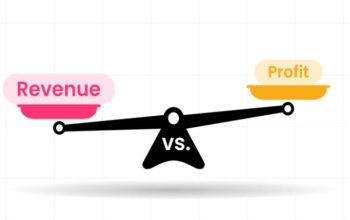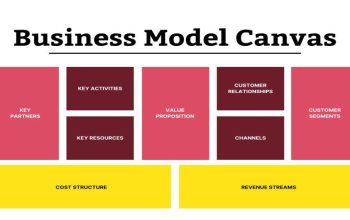Introduction
In today’s digital-first world, content marketing has become one of the most powerful tools for business growth. Instead of relying solely on traditional advertising, businesses are now using blogs, videos, podcasts, and social media to educate, engage, and convert their audiences. Whether you’re a startup, a small business, or a growing enterprise, content marketing can help you build trust, increase visibility, and drive sales—without a massive budget.
In this article, we’ll break down how to use content marketing effectively to grow your business.
1. What is Content Marketing?
Content marketing is a strategic approach focused on creating and sharing valuable, relevant, and consistent content to attract and retain a clearly defined audience—and ultimately, to drive profitable customer action.
Unlike direct selling, content marketing builds relationships. It answers your audience’s questions, solves their problems, and keeps them coming back for more.
Examples of content marketing include:
- Blog posts
- Social media content
- Videos and YouTube tutorials
- Email newsletters
- E-books and guides
- Podcasts
- Infographics
2. Set Clear Goals for Your Content Marketing
Start with a clear understanding of what you want your content to achieve. Common goals include:
- Increasing website traffic
- Generating leads
- Boosting brand awareness
- Improving customer retention
- Establishing authority in your industry
Example Goal: “Increase monthly website traffic by 30% within 3 months through consistent blog publishing.”
3. Know Your Target Audience
Your content won’t succeed if it doesn’t speak to the right people. Define your buyer personas—semi-fictional profiles of your ideal customers. Understand their:
- Pain points
- Goals
- Preferred content formats
- Online behavior
Use this information to tailor your messaging and content style accordingly.
4. Create High-Quality, Value-Driven Content
Content must provide real value. Don’t just write for the sake of posting—focus on content that educates, entertains, or solves problems.
Tips for creating effective content:
- Use clear headlines and formatting for readability
- Include actionable insights and takeaways
- Incorporate visuals (images, charts, videos)
- Ensure content is original and up-to-date
Example: If you’re a fitness brand, create blog posts like “10 Home Workouts That Burn Fat Fast” or videos demonstrating proper form.
5. Use SEO to Increase Visibility
Search engine optimization (SEO) helps your content rank on Google and other search engines, increasing organic traffic over time.
SEO basics:
- Research relevant keywords using tools like Google Keyword Planner or Ubersuggest
- Include keywords in titles, headers, and body content
- Optimize meta descriptions and image alt tags
- Create internal links to other relevant content on your site
Over time, SEO helps drive consistent, free traffic to your site.
6. Distribute and Promote Your Content
Creating great content isn’t enough—you need to make sure it reaches your audience.
Content distribution strategies:
- Share on social media platforms (Facebook, LinkedIn, Instagram, etc.)
- Send content to your email list
- Repurpose blog posts into videos, reels, or carousels
- Use paid ads to amplify high-performing pieces
- Collaborate with influencers or industry partners
7. Use Content to Capture Leads
Content marketing can support lead generation when you offer something valuable in exchange for contact information.
Tactics to try:
- Offer downloadable guides, checklists, or templates
- Use lead capture forms on blogs and landing pages
- Add call-to-actions (CTAs) like “Subscribe,” “Get the Free E-Book,” or “Book a Demo”
Nurture leads through follow-up email campaigns and targeted content.
8. Analyze and Improve Your Content Strategy
Measure your results to understand what’s working and what needs improvement.
Key content marketing metrics:
- Website traffic (Google Analytics)
- Time on page and bounce rate
- Social shares and engagement
- Conversion rate (downloads, sign-ups, sales)
- Keyword rankings
Use this data to refine your content calendar, improve quality, and adjust distribution tactics.
9. Stay Consistent
Success in content marketing doesn’t happen overnight. It takes consistency, patience, and regular content creation. Develop a content calendar and commit to publishing weekly or bi-weekly.
Pro tip: Start with what’s manageable—quality over quantity matters.
10. Examples of Content Marketing Success
- HubSpot: Became a SaaS giant through free blogs, courses, and resources.
- Glossier: Used user-generated content and community-focused content to build a beauty empire.
- Grammarly: Grows via educational articles, email tips, and engaging social posts.
These brands prove that content marketing, done well, creates loyalty, drives engagement, and fuels growth.
Conclusion
Content marketing is a cost-effective, long-term strategy to grow your business by building trust and adding value to your audience’s lives. By understanding your goals, knowing your audience, producing helpful content, and distributing it strategically, you can turn content into your most powerful growth engine.
Start small, stay consistent, and always aim to serve your audience—and your business will grow as a result.
FAQs: How to Use Content Marketing to Grow Your Business
1. What is content marketing?
Content marketing is a strategy focused on creating and sharing valuable, relevant content to attract and retain a target audience. The ultimate goal is to drive profitable customer action through trust and engagement, rather than direct advertising.
2. How does content marketing help grow a business?
It builds brand awareness, improves customer trust, drives organic traffic, nurtures leads, and ultimately boosts conversions and sales by providing helpful, engaging content that solves problems or answers questions.
3. What types of content are most effective for businesses?
Common and effective types include:
- Blog posts
- Videos
- Social media posts
- Email newsletters
- Infographics
- E-books or whitepapers
- Podcasts
The best type depends on your audience and industry.
4. Do I need a blog to start content marketing?
A blog is a great foundation, but not mandatory. You can start with video, social media, or even email newsletters—whichever format aligns best with your audience and strengths.
5. How do I come up with content ideas?
Identify common questions from your audience, research trending topics in your industry, check competitors, use keyword tools, and ask your customers directly for insights on what they want to learn.
6. What is SEO, and why is it important in content marketing?
SEO (Search Engine Optimization) is the process of optimizing your content so it ranks higher in search engines like Google. It’s crucial because it drives free, long-term traffic to your website.
7. How often should I publish content?
Consistency is more important than frequency. Start with what’s manageable—like one blog post or video per week—and increase output as your process improves.
8. What tools can help with content marketing?
Popular tools include:
- Content planning: Trello, Notion, or Asana
- SEO research: Ubersuggest, SEMrush, Google Keyword Planner
- Design: Canva, Adobe Express
- Analytics: Google Analytics, HubSpot, BuzzSumo
9. Can content marketing generate leads and sales?
Yes. With strong calls-to-action (CTAs), lead magnets (like free e-books), and consistent nurturing (via email or retargeting), content can guide users through the sales funnel from awareness to conversion.
10. How long does it take to see results from content marketing?
Content marketing is a long-term strategy. While some posts or videos may go viral quickly, most results—like improved traffic, rankings, and conversions—typically show within 3 to 6 months with consistent effort.







